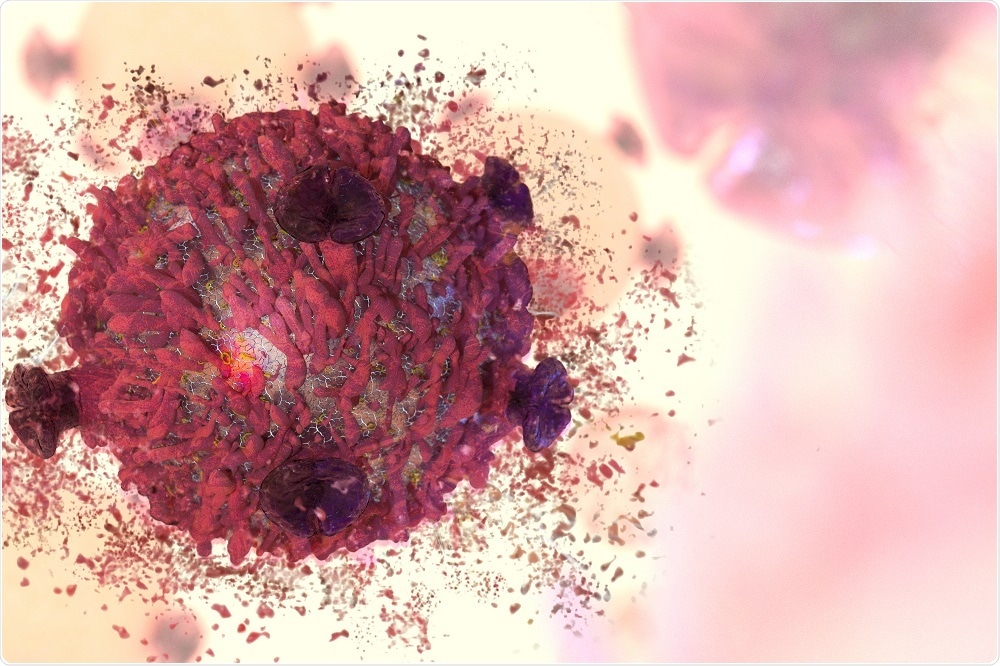The adaptive immune system is a vigorous and sophisticated system of defense for an organism against invading pathogens.

Credit: CI photos/Shutterstock.com
The adaptive immune system is evolutionarily more advanced than its cellular-based counterpart, the innate immune system. Together, the innate and adaptive immune systems can mount both a rapid and long-lasting response to infection by viruses, bacteria, fungi, parasites, and other threatening pathogens.
The adaptive immune system is only present in vertebrates, and unlike the innate immune system, its responses are highly specific to the particular invading pathogen.
Fundamentally, the immune system must differentiate between self and non-self. Failure to properly identify a molecule as self can result in a self-destructive response resulting in autoimmunity and occasionally death. Molecules that elicit an adaptive immune response are known as antigens. Cells that are important in the adaptive immune response include B lymphocytes and T lymphocytes.
B cells
B cells synthesize antibodies, which are the basis of the adaptive immune response. B cells produce billions of different antibodies, each having a unique amino acid sequence and a different binding site for antigens. These antibodies are called immunoglobulins, and are some of the most abundant proteins in the blood. Mammals make five different types of antibody, each specific to a different type of response.
Antibodies can be secreted molecules or cell surface molecules. Every individual B cell makes a single type of antibody with the same antigen-binding site. The cell’s first antibodies are inserted into its plasma membrane as cell-surface receptors, and each receptor is associated with transmembrane proteins that activate intracellular signaling pathways when the receptor is bound by a ligand.
When activated for the first time, the B cell differentiates into an antibody-secreting effector cell, and starts to make large quantities of soluble antibody with the same antigen binding site as the original activating membrane receptor.
The activated cell, known as an effector B cell, grows from a small lymphocyte to a large plasma cell. It secretes antibodies at a rate of 2000 per second. These cells typically die after several days, though some can last in the bone marrow for months or years.
T cells
T cell responses are known as cell-mediated responses, distinguishing them from antibody responses by B cells. T cells are different from B cells in that they are activated by only when the foreign antigen is displayed on the surface of antigen-presenting cells in peripheral lymphoid organs.
B cells recognize intact antigens, whereas T cells recognize fragments of protein antigens that have already been partly degraded inside a cell. Another difference is that once activated, T cells have only a short-range effect, within a lymph node or at the site of the infection. T cells interact with other cells to either kill it or emit a signal.
T cell subtypes
There are two types of T cells, cytotoxic T cells and helper T cells. Cytotoxic T cells kill cells directly that are infected with a pathogen. Helper T cells stimulate responses of other cells such as macrophages, B cells, and cytotoxic T cells.
Cytotoxic T cells protect the host against pathogens like viruses, bacteria, and parasites that proliferate in the cellular cytoplasm, where they can’t be bound by antibodies. The T cell kills the infected cell before the microbes can infect neighboring cells. A T cell can target other cells presenting the same antigen once it is initially activated.
When it attacks an infected cell, it uses one of two strategies to kill the cell. It can release a pore-forming protein called perforin to make holes in the membrane of the cell and excrete proteases which enter the target cell’s cytosol and trigger the process of apoptosis, or programmed cell death. The second strategy is activation of a caspase cascade that also results in apoptosis.
In contrast, helper T cells stimulate B cells to make antibodies to attack extracellular pathogens, activate macrophages to destroy pathogens, and activate cytotoxic T cells to kill target cells. It does this by secreting cytokines and displaying costimulatory proteins on its surface.
When activated for the first time, the helper T cell can differentiate into one of two types of helper cells, TH1 or TH2. TH1 cells primarily activate macrophages and cytotoxic T cells, whereas TH2 cells activate B cells.
The Immune Response HD Animation
Further Reading